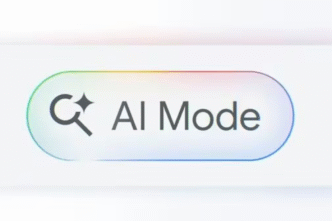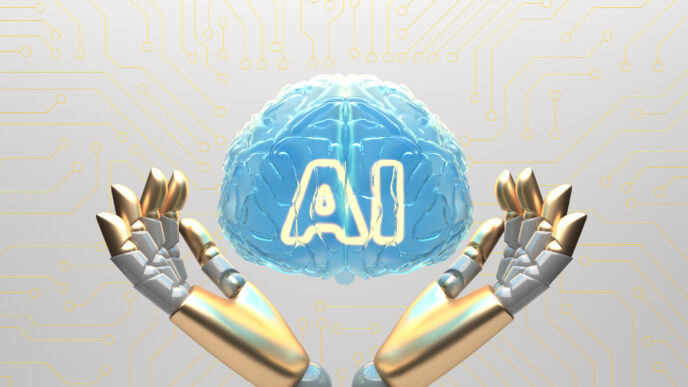years, Google’s search engine has served as an access point to the world’s information and provided blue links and snippets based on users’ queries. Now, with the release of Google’s AI Mode, the blue-link search interface is being evolved into more of a conversation—context-sensitive, and driven by sophisticated LLMs. However, what is the difference between Google’s AI Mode and traditional search? How do they compare with other LLMs, such as ChatGPT or Microsoft’s Copilot? In this article, we attempt to systematically address these questions and present an informed, thorough analysis of the evolving search landscape.
Table of Contents
-
The Evolution of Search: From Keywords to Conversation
- What Is Google’s AI Mode?
- How Does Traditional Search Work?
- Key Features of Google’s AI Mode
- Google’s AI Mode vs. Traditional Search: Head-to-Head
- Google’s AI Mode vs. Other LLMs
- Strengths and Limitations of Google’s AI Mode
- The Future of Search: What’s Next?
- Conclusion
1. The Evolution of Search: From Keywords to Conversation
In the majority of its existence, Google Search has depended on keyword matching, ranking algorithms, and indexing websites to provide results. Google has progressively rolled out features that attempt to comprehend language and intent more like humans do; these include semantic understanding (RankBrain), contextual comprehension (BERT), and even multimodal understanding through MUM. Now, the integration of generative AI and LLMs is signifying the next leap: search capable of understanding, synthesizing, and conversing.
2. What is Google’s AI Mode?
Google’s AI Mode is a new and more interactive way to use Google Search. Rather than presenting a simple list of links, it returns comprehensive answers crafted by an AI using many different sources in real time. It builds off Gemini 2.5, one of the leading LLMs, and works seamlessly within Google’s ecosystem utilizing data from Search, Maps, Shopping, and more.
Key characteristics:
- Conversational, context-aware responses
- Multimodal input (text, voice, and images)
- Follow-up questions with long-term context retention
- Seamless use of Google’s services and the Internet
3. How Does Traditional Search Work?
Traditional Google Search relies on:
- Keyword matching: Analyzing user queries and matching them with web pages in the database.
- Ranking algorithms: Utilizing PageRank along with hundreds of other signals to rank the results.
- Snippets and blue links: Lists with links, snippets, and occasionally featured answers, providing information to users.
4. Highlights of Google’s AI Mode
4.1 Enhancing Reasoning and Integration Skills Further
AI Mode answers complex web queries as a “query fan-out” technique that breaks down complex questions into sub-questions, using answers from many different web pages to construct a thorough answer from various angles.
4.2 Multimodal Input
Image uploading, typing, and speaking are all methods users can employ. For instance, asking a plant care question after capturing an image of a plant or answering questions after being asked them is also possible.
4.3 Conversational Follow Up
AI Mode is capable of supporting a dialogue which was not possible with static searches. AI Mode lets users ask stand-alone questions, add layers to their questions, promote related discussions, or refine their searches and still not return to square one.
4.4 Google and the Deep Web
AI Mode has access to Google Knowledge Graph, product information, and current data. It can also access maps, shopping information, and is capable of summarizing long documents and threads from gmail and docs.
4.5 Lack of Transparency with Sources
Links to the sources used for the information are available on AI Mode, allowing Users verify facts and dive deeper if they wish. Some users contest that transparency is evolving too slowly, but on the other hand, it is lacking immense amounts of foresight, critique, and improvement.
5. Google AI Mode and Traditional Search Compared
| Feature | Traditional Search | Google AI Mode |
|---|---|---|
| Query Type | Keywords, short queries | Complex, conversational queries |
| Response Format | List of links, snippets | Synthesized, full-page answers |
| Follow-Up | New search required | Ongoing conversation |
| Input Modes | Text | Text, voice, images |
| Personalization | Limited, based on history | Deep, context-aware personalization |
| Source Transparency | High (direct links) | Improving (links in responses) |
| Integration | Web search only | Web + Google services (Maps, Gmail) |
| Best For | Navigational, fact-finding | Research, planning, multi-step tasks |
5.1 Guidelines for Choosing an AI Assistant or Searching the Web
- Traditional Search: It helps if you need to retrieving information quickly, direct navigating to specific pages, or wish to access many sources on your own.
- AI Mode: Great for in-depth information gathering, performing comparisons, strategic planning, or when you need context-rich answers with a full explanation and the option to ask more questions.
6. Google’s AI Mode Compared to Other LLMs
Other OpenAI Powered ChatGPT or Microsoft’s Copilot and Meta AI have their own LLM powered Assistants. What distinguishes Google AI from these competitors?
6.1 Engine Overview: Gemini vs. The Other Models
-
Gemini (Google): Utilizes AI Mode and Google productivity tools. Gemini is a productivity focused multimodal, context-aware-Deep AI, tightly woven in Google’s ecosystem.
- GPT-4/ChatGPT (OpenAI): Offers plugins and is autonomous as a chatbot. OpenAI powered chatbots excel at creative writing, reasoning, and open-ended dialogues.
- Copilot (Microsoft): Uses GPT-4 and Bing’s web index, which is integrated into Windows and Office.
- Meta AI: Works mainly on the social aspect or embedded in the messaging app.
6.2 Comparison Table
| Feature | Google AI Mode | ChatGPT (OpenAI) | Copilot (Microsoft) |
|---|---|---|---|
| Model | Gemini 2.5 | GPT-4 | GPT-4 + Bing |
| Web Integration | Deep (Google Search, Maps, Gmail) | Limited (plugins, browsing mode) | Deep (Bing, Office) |
| Multimodal | Yes | Yes (images, some audio) | Yes |
| Conversational | Yes | Yes | Yes |
| Personalization | High (Google account) | Limited | Moderate (Microsoft account) |
| Source Links | Yes (improving) | Sometimes | Yes |
| Best For | Search, planning, productivity | Creative, open-ended tasks | Productivity, search |
6.3 Unique Advantages of Google’s AI Mode
-
Broader Web Coverage: For each query, AI Mode connects to more unique domains compared to other LLMs—7 unique domains versus 3 for AI Overviews and fewer for other LLMs.
- Response Length: AI Mode provides answers that are more detailed than traditional search responses and similar to ChatGPT’s answers, averaging 300 words per answer.
- Task Awareness: Unlike other AIs, AI Modes are built to handle research, planning, and multi-step tasks, not just simple Q&A or conversations.
7. Google AI Mode: Pros and Cons
7.1 Advantages
-
Handles Complex Queries: Excels at layered, complex multi-part queries that in the traditional model would require multiple searches.
- Conversational Experience: Supports context-aware follow-ups making research and planning more fluid compared to primitive systems.
- Multimodal Capabilities: Supports text, speech, and picture inputs expanding ease of access and use cases.
- Personalization: Custom-tailored and context-aware responses are made possible through Google’s ecosystem.
- Integrated Productivity: Acts as a digital assistant by connecting with Gmail, Docs, Maps, etc.
7. 2 Disadvantages
-
Transparency: Some users and publishers still worry about traffic distribution and source citation, although this is getting better.
- Accuracy: AI Mode, like all LLMs, carries the risk of generating outdated or plausible untrue information. This is especially true for critical content unless one cross checks facts.
- Not Always Best for Simple Queries: Traditional search engines remain faster and more reliable for straightforward, navigational queries.
- Adapting Ads and Monetization: How advertisements and sponsored content are integrated into AI-generated content is still a work in progress for Google.
8. The Future of Search: What Comes Next?
AI Mode on Google is only a glimpse of what we can expect in the future. As AI Mode continues to develop, look for the:
- More Transparent Source Attribution: Better content citation and clearer linking to the original work.
- Deeper Personalization: Anticipatory proactive suggestions tailored to users and real-time adaptations by AI.
- Expanded Multimodal Abilities: Improved integration of audio, video, and world elements.
- Integration Across Devices: AI mode becoming the go-to interface for not only searches, but also productivity, communication, and daily living activities.
- Greater Industry Impact: The use of AI-generated answers will cause a shift in SEO, content creation, and digital marketing.
9. Conclusion
AI Mode is a key feature that enables Google to revolutionize its methods of interfacing with data. Shifting from static keywords and blue links to text and chatter responds enriches interaction with users and reshapes search into an intelligent, collaborative assistant.
AI Mode will enhance traditional tasks such as deep research, multi-faceted planning, and intricate inquiries while providing a preview of AI-powered ambient intelligence that will mark the upcoming phase of the web.
Other LLMs don’t compare to Google’s AI Mode due to its capabilities, focus on practical, task-oriented assistance, integration with Google services, the Web, and multimodality.
With further advancements in technology, AI-powered search tools will serve as an even better virtual assistant: providing users with more distinct, clear, and robust ways to search and interact with information, changing how we access information, and transforming modern life in a digital age.













